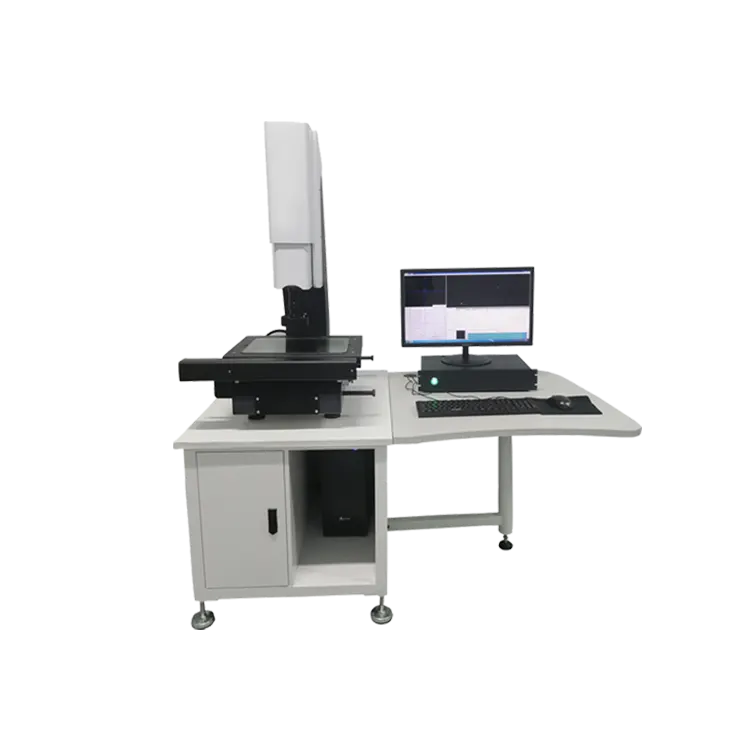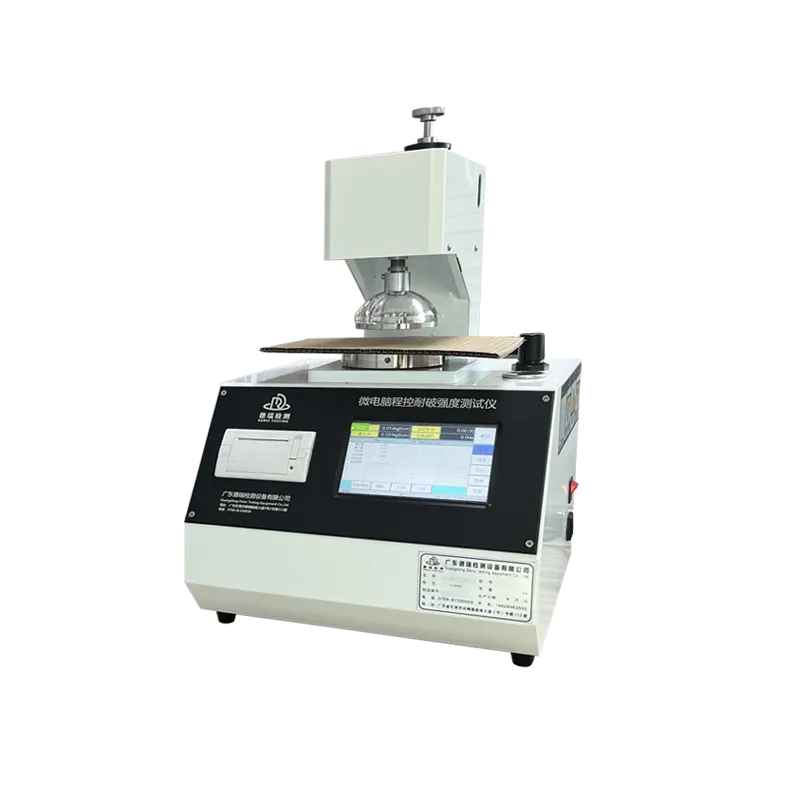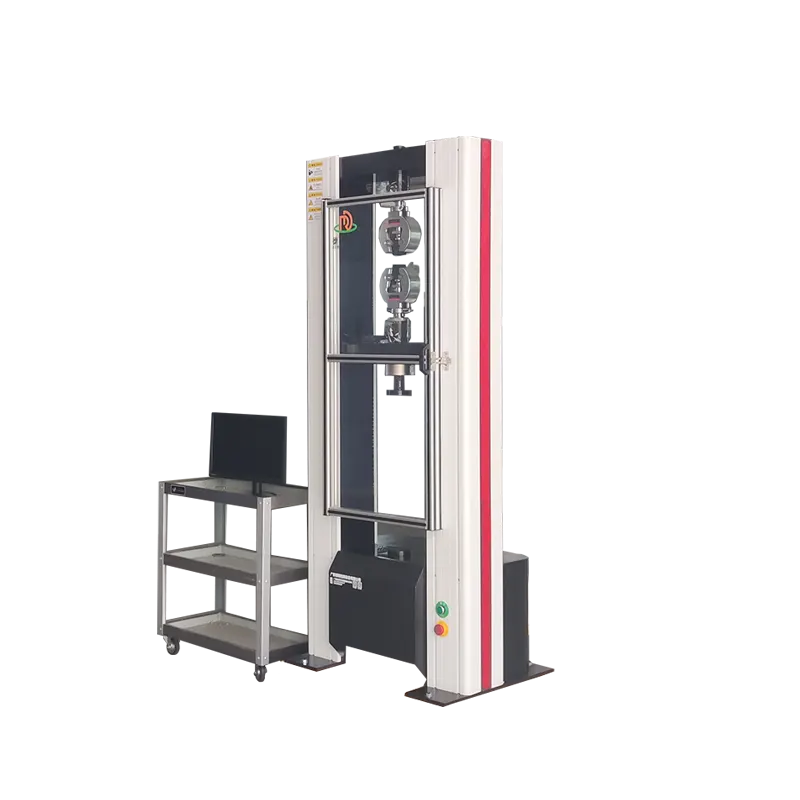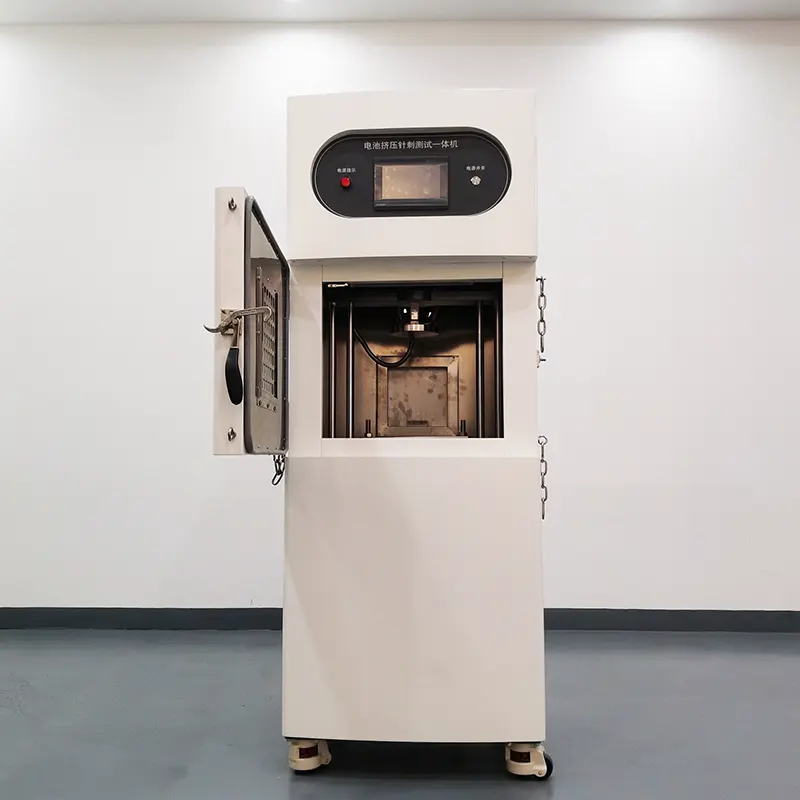Discover the importance of using a Battery Impact Battery Thermal Shock Chamber to test the performance and durability of batteries under extreme conditions.
Our Battery Impact Thermal Shock Chamber is designed for rigorous testing of battery performance under harsh environmental conditions. This state-of-the-art chamber helps simulate various conditions that batteries undergo in real-life scenarios. The following features ensure optimum testing results and reliability:
Equipment structure:
1. This machine adopts a PLC touch screen control system, which is convenient and intuitive. It features fully automatic constant temperature and rapid temperature compensation function.
2. Over-temperature protection and automatic power-off system for overloading
3. New High-Temperature Resistant Long Shaft Motor
4.Four casters are installed at the bottom for easy movement and fixation.
5. Circulation System: Forced Horizontal Air Circulation
6. Heating System: PID + S.S.R.
7. Timing Function: When the temperature reaches the set time, the power-off alarm indicator will be activated.
Main features and functions of the equipment:
1.This machine adopts a PLC touch screen control system, which is convenient and intuitive. It features fully automatic constant temperature and rapid temperature compensation function.
2.Over-temperature protection and automatic power-off system for overload.
3.Brand-new high-temperature resistant long shaft motor;
4.It is equipped with 4 casters at the bottom for easy movement and fixation.
5.Circulation system: Forced horizontal air supply circulation;
6.Heating system: PID + S.S.R;
7.Timing function: When the temperature reaches the set time, power off and alarm indication.
8.The test area of the test chamber is one independent test zone, and the inner box of the test zone is made of stainless steel SUS304.
9.The test chamber is equipped with an exhaust system. A blower is installed on the top of the chamber to discharge the smoke from the test area.
10.The exhaust pipe extends to the rear: diameter 100mm;
11.The front door of the test chamber is reinforced in design. An exposed hinge is installed on the left side of the door, and a powerful door lock catch is installed on the right side to effectively secure the door. The hinge and lock catch are made of reinforced standard parts specifically for equipment.
12.It is equipped with 4 casters at the bottom for easy movement and fixation.
Battery Thermal Shock (Thermal Abuse) Test Chamber in Accordance with Standards:
1. IEC 62133-2017 "Safety requirements for batteries and battery packs containing alkaline or non-acid electrolytes"
2. UN38.3 Recommendations on the Transport of Dangerous Goods - Manual of Tests and Criteria
3. UL 1642-2012 "Safety Standard (Lithium Batteries)"
4. UL 2054-2012 "Standard for Safety of Lithium Batteries" and other testing standards
5. IEC 62619-2017 "Standard for Energy Storage Batteries"
6. GB/T 31485-2015 "Safety Requirements and Test Methods for Power Batteries of Electric Vehicles"
7. UL 2580-2013 "Standard for Safety of Electric Vehicle Battery Systems"
8. IEC 62619-2017 "Secondary lithium batteries and battery assemblies with alkaline or other non-acid electrolytes - Safety requirements for use in industrial applications"
9. UL 1973-2013 "Standard for Safety of Energy Storage Batteries"
10. UL 2271 "Safety Standard for Batteries for Light Electric Vehicles"
Test Operation Steps
1. Starting the Test
- Loading the Sample:
- Wear heat-resistant gloves (to prevent burns) and place the fixed battery in the center of the chamber (ensuring uniform temperature distribution).
- Close the chamber door and ensure it is sealed properly.
- Starting the Program:
- Select the preset test program (or manually input parameters) on the control panel and press "Start" to begin heating.
2. Test Monitoring
- Real-Time Monitoring:
- Observe the battery’s condition through the observation window or remote monitoring system (if available), recording:
- Time taken to reach initial temperature.
- Temperature fluctuations.
- Monitor the device’s operation (fan function, temperature stability).
- Observe the battery’s condition through the observation window or remote monitoring system (if available), recording:
- Abnormal Handling:
- If the battery exhibits smoking, fire, or explosion (even before the set time), immediately press the "Emergency Stop" button, cut off power, and activate smoke exhaust/fire suppression (if equipped).
- If the temperature exceeds the alarm threshold but the battery has not failed, the device will automatically pause heating (manual confirmation is required to continue).
Safety Precautions
- Personal Protection:
- Operators must wear heat-resistant gloves, safety goggles, and fire-resistant clothing (especially when observing battery anomalies).
- The test area should have a fire extinguisher (CO₂ or dry powder), emergency shower, and smoke exhaust system.
- Prohibited Actions:
- Never open the chamber door during testing (to prevent high-temperature gas or flame ejection).
- Do not place flammable materials or clutter near the test chamber.
- Emergency Response:
- In case of fire/explosion, immediately activate the emergency plan (cut power, start fire suppression), evacuate unrelated personnel, and report according to company safety protocols.


















